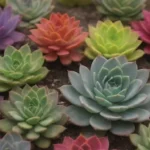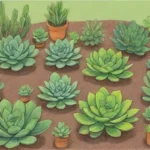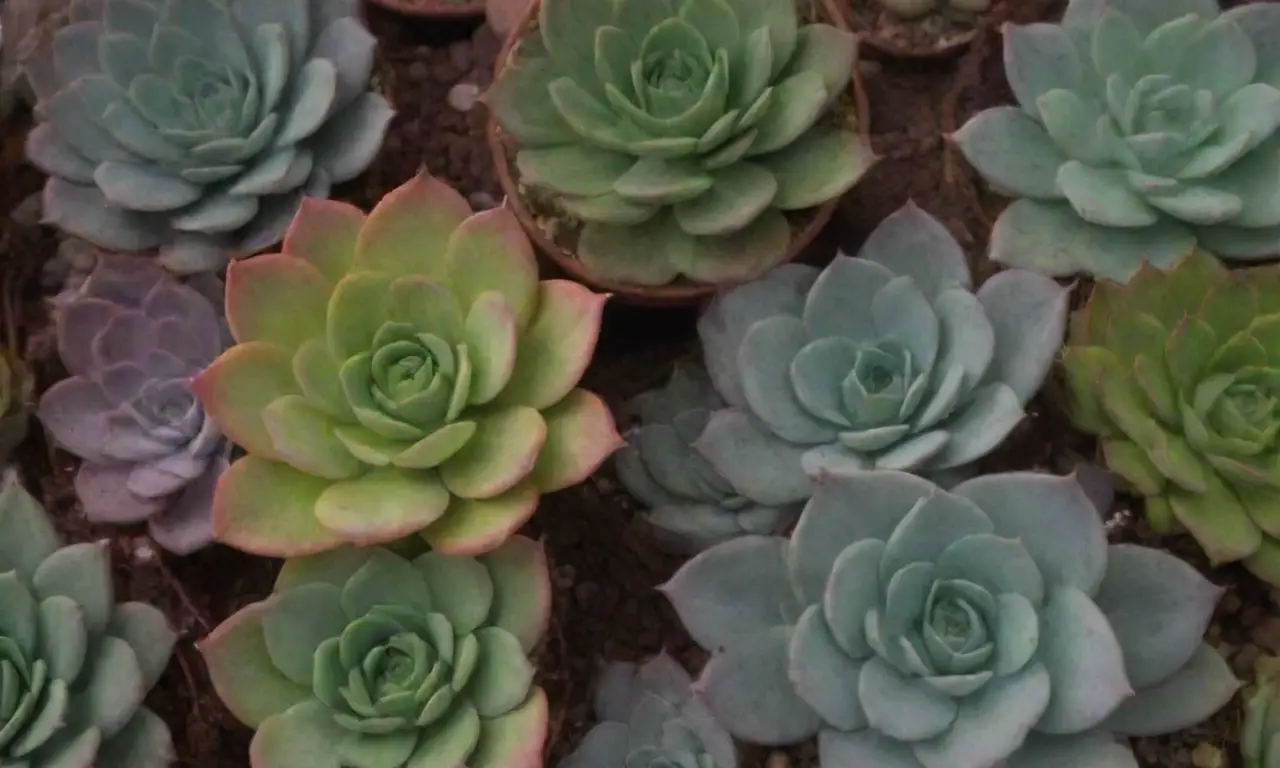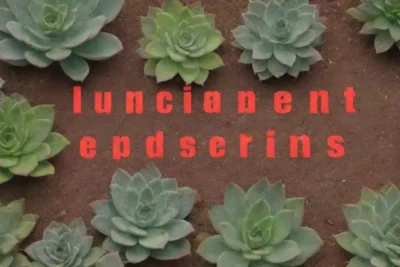
Learning from the Past: Conservation Lessons from Succulents

Introduction
Succulents are more than just trendy houseplants; they are fascinating organisms with a complex story of survival and adaptation. As a group of plants known for their ability to store water in their leaves, stems, or roots, succulents have developed unique methods to thrive in extreme environments, often characterized by aridity and nutrient-poor soils. The study of these plants not only provides insights into their ecological importance but also offers broader lessons for conservation and sustainability in the face of environmental change.
This article will explore the historical significance of succulent plants, detailing their evolution and resilience in harsh climates. We will further delve into what these remarkable plants have taught us about conservation efforts that are increasingly relevant today, especially as we confront the challenges presented by climate change, habitat loss, and biodiversity decline.
The Evolutionary Journey of Succulents
Succulents are a diverse group that encompasses various families of plants, including Cactaceae (cacti), Crassulaceae (stonecrops), and Euphorbiaceae (spurges), among others. Their origins can be traced back millions of years, during which they evolved from ancestral lineages of non-succulent plants. A central mechanism underpinning their evolutionary journey is crassulacean acid metabolism (CAM), a specialized photosynthetic pathway that allows them to conserve water by opening their stomata at night rather than during the day.
This unique photosynthetic adaptation emerged in response to the ancient climatic shifts that led to the spread of arid environments across the globe. As a result, succulents didn't just survive; they flourished in conditions where most other plant species would struggle. The development of thick, fleshy leaves and stems, as well as protective adaptations like spines and waxy coatings, are key features that have allowed them to call such harsh ecosystems home.
In addition to their physiological adaptations, succulents have also formed intricate relationships with their environments. Many species have developed mutualistic relationships with pollinators, fungi, and even animals, providing them with a suite of survival strategies that highlight the interconnectedness of life. These relationships underline the importance of sustaining habitat integrity, suggesting that conservation efforts should focus on preserving these delicate ecological webs.
Lessons in Resilience
Studying succulents offers vital lessons in resilience. Their ability to conserve water and efficiently utilize limited resources teaches us about the importance of resource management in conservation practices. For example, succulents exemplify how plants can endure prolonged droughts, sparking discussions around drought-resistant landscaping in urban areas. This approach helps mitigate the effects of urban heat islands, shows us how to cultivate local flora effectively, and encourages the use of native plants that contribute positively to local biodiversity.
Furthermore, succulents possess a remarkable capacity for regeneration. Many succulents can produce new individuals from leaf or stem cuttings, a trait that is not only beneficial for their survival but also provides insight into horticultural practices. Techniques developed around this ability can inform conservation strategies, especially in combating habitat destruction. If we can propagate endangered succulent species, we can aid in restoring their populations in the wild, thus maintaining the ecological balance.
 The Fight Against Invasive Species Threatening Succulents
The Fight Against Invasive Species Threatening SucculentsLastly, the resilience of succulents serves as a reminder of the power of adaptation in the face of change. As environments alter due to climate change, understanding how these plants have adjusted—and continue to adjust—can guide conservationists in devising more effective strategies. We can analyze the factors that enable succulents to persist and evaluate how to apply these strategies to other plant species facing changes in their habitats.
Conservation Challenges Ahead
Despite their impressive adaptations and resilience, succulents are not immune to the growing threats posed by human activities. Urban development, agricultural expansion, and overharvesting for ornamental trade have put tremendous pressure on natural populations. Many succulent species are listed as threatened or endangered due to loss of habitat, invasive species, and climate change, with alarming implications for biodiversity.
One of the most pressing concerns is the collection of succulents for the ornamental plant trade. Some species have been harvested to the point of extinction in their natural habitats. This practice raises ethical questions about conservation and responsible cultivation. It’s imperative that we address these concerns head-on, fostering a culture of sustainability that promotes the cultivation of succulent plants through responsible horticulture rather than exploitation.
Furthermore, climate change presents an overarching threat that exacerbates the existing challenges facing succulents. Changes in precipitation patterns, rising temperatures, and increased frequency of extreme weather events can drastically affect the arid ecosystems that succulents call home. As their habitats become more unpredictable, the fate of many succulent species hangs in the balance. Researching these trends is essential for predicting how changes will influence plant communities and implementing conservation strategies tailored for future conditions.
As botanists, ecologists, and conservationists work to safeguard succulent diversity, it is crucial that we engage local communities. Involving indigenous peoples and local stakeholders in conservation management empowers them to protect their environments and fosters an appreciation for native flora. Community-based conservation initiatives that incorporate traditional ecological knowledge can elevate these efforts and enable broader participation in the protection of these incredible plants.
The Role of Technology in Conservation
Technological advancements also hold considerable promise for enhancing conservation efforts for succulents. Remote sensing, for example, allows scientists to monitor plant populations from afar, tracking changes over time without disturbing fragile habitats. Using drones to survey isolated areas can pinpoint succulent communities in distress, enabling timely interventions.
Additionally, genomic technologies improve our understanding of plant diversity and resilience. Genetic analyses can help identify traits associated with drought tolerance or disease resistance, guiding breeding programs aimed at preserving endangered species. These techniques can also discern the ecological relationships and genetic diversity of succulents, crucial for creating strategic conservation plans.
 How Local Communities Can Aid in Succulent Conservation Efforts
How Local Communities Can Aid in Succulent Conservation EffortsMoreover, artificial intelligence (AI) can streamline the identification of plant species, improving our ability to catalog succulents and track their populations. AI algorithms can analyze existing databases and facilitate plant recognition in the field, providing conservationists with valuable data on species distribution and habitat health.
Conclusion

The exploration of succulent plants unveils a trove of lessons for conservation. Their journey through time highlights their incredible adaptations that have allowed them to thrive in some of the most challenging environments on Earth. These plants serve as critical pillars of biodiversity, offering us insights into resilience, resource management, and the importance of ecological relationships.
As we confront multiple environmental threats, we must look towards these living examples of survival as guides for creating sustainable ecosystems and conserving valuable resources. Each lesson learned from succulents emphasizes the necessity for holistic approaches to conservation—acknowledging not only the plants themselves but also the interconnected systems of life that support them.
It is crucial for us to act thoughtfully, employing traditional practices and modern technological advancements to foster a culture of responsible stewardship of our natural world. Transformative conservation requires collective efforts that span scientific research, community engagement, and responsible policies. By learning from the past and embracing the future, we can ensure that these resilient plants continue to inspire and thrive, teaching us invaluable lessons for generations to come.
If you want to read more articles similar to Learning from the Past: Conservation Lessons from Succulents, you can visit the Endangered succulent species category.





You Must Read